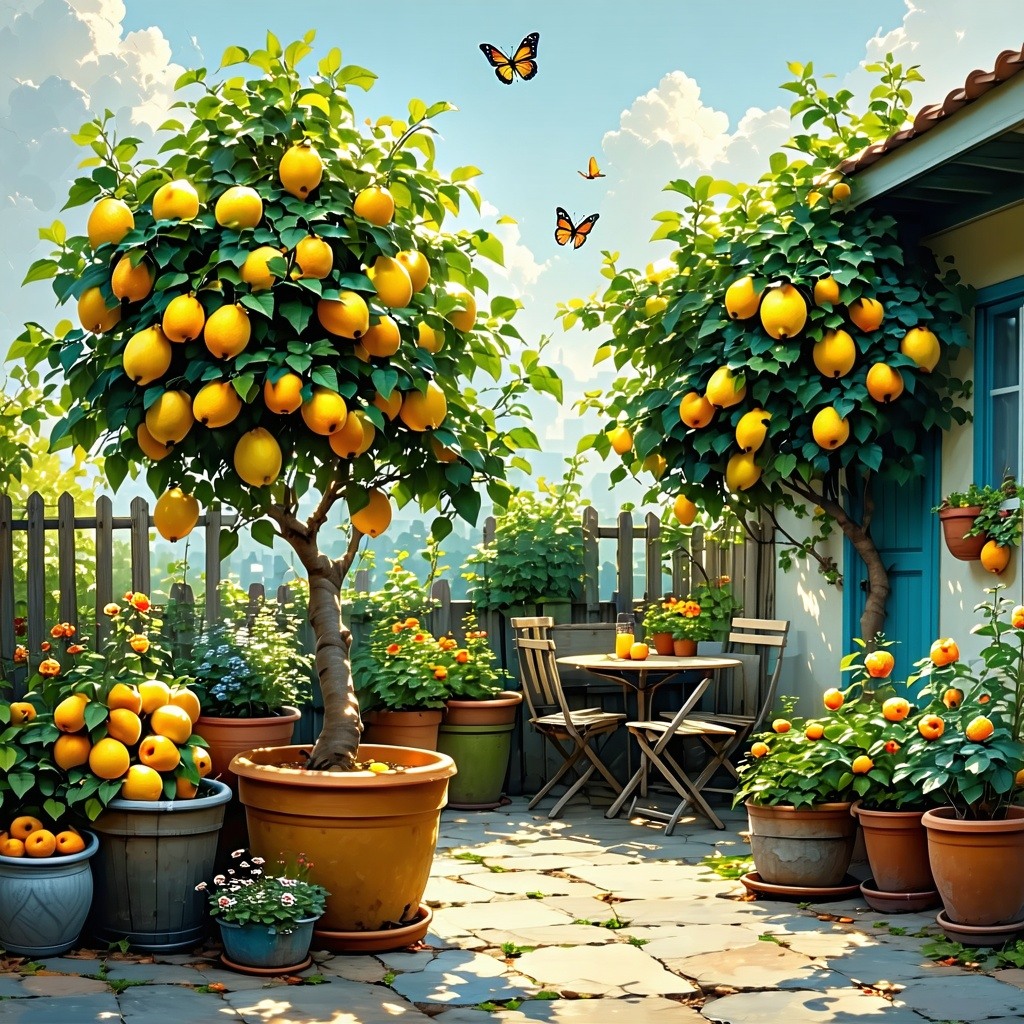Dwarf Fruit Trees: Big Harvests for Small South East Queensland Spaces
1. Introduction
In the sun-drenched expanses of South East Queensland, the desire to cultivate one's own orchard often collides with the reality of limited space. Enter dwarf fruit trees—a horticultural marvel that marries bountiful yields with compact stature. These diminutive arboreal wonders are tailored for urban gardens, patios, and even balconies, ensuring that no space is too confined for a fruitful harvest.
2. Advantages of Dwarf Fruit Trees
-
Space Efficiency: Dwarf varieties typically reach heights of 2 to 3 meters, making them ideal for restricted areas without compromising on fruit production.
-
Ease of Maintenance: Their manageable size simplifies pruning, spraying, and harvesting, reducing the labor intensity often associated with standard fruit trees.
-
Accelerated Fruiting: Many dwarf trees commence bearing fruit sooner than their full-sized counterparts, allowing gardeners to relish the fruits of their labor in a shorter timeframe.
3. Selecting Suitable Dwarf Varieties for SEQ
Choosing the right cultivar is paramount to ensure both the tree's health and a generous harvest.
-
Citrus Trees:
-
Meyer Lemon: Renowned for its prolific fruiting and sweet, thin-skinned lemons, this variety flourishes in SEQ's subtropical climate.
-
Kaffir Lime: Valued not only for its aromatic fruit but also for its fragrant leaves, indispensable in various culinary traditions.
-
-
Stone Fruit Trees:
-
Dwarf Peach ('Pixzee'): This compact tree produces luscious, juicy peaches and is well-suited to the region's conditions.
-
Dwarf Nectarine ('Nectazee'): Offers sweet, smooth-skinned nectarines, perfect for limited spaces.
-
-
Apple Trees:
-
'Anna' Apple: A low-chill variety that thrives in warmer climates, producing crisp and flavorful apples.
-
'Dorsett Golden': Another excellent choice for SEQ, yielding sweet, golden apples.
-
4. Cultivation Techniques for Optimal Growth
To ensure the vitality and productivity of dwarf fruit trees, adherence to specific cultivation practices is essential.
-
Soil Preparation: A well-draining soil enriched with organic matter forms the cornerstone of robust tree health. Amending the soil with compost or well-rotted manure enhances fertility and structure.
-
Planting Position: Selecting a site that receives ample sunlight—preferably 6 to 8 hours daily—is crucial for fruit development. Additionally, providing shelter from prevailing winds safeguards the trees from potential damage.
-
Watering Regimen: Consistent moisture is vital, particularly during the establishment phase and fruiting period. However, caution must be exercised to prevent waterlogging, which can precipitate root rot.
-
Fertilisation: Employing a balanced, slow-release fertiliser tailored for fruit trees supports sustained growth and fruiting. Regular soil testing can inform precise nutrient supplementation.
5. Pruning and Training Dwarf Trees
Proper pruning and training are instrumental in maintaining the structural integrity and productivity of dwarf fruit trees.
-
Pruning Objectives: The primary goals encompass removing dead or diseased wood, facilitating light penetration, and shaping the tree for structural soundness.
-
Timing: Engage in pruning during the dormant season—typically late winter—to minimise stress and encourage vigorous spring growth.
-
Techniques: Employ methods such as thinning cuts to eliminate overcrowded branches and heading cuts to promote lateral growth, thereby enhancing fruiting potential.
6. Pest and Disease Management
Vigilant monitoring and proactive measures are imperative to mitigate pest infestations and disease occurrences.
-
Common Pests: Aphids, scale insects, and fruit flies are prevalent adversaries. Implementing integrated pest management strategies, including biological controls and organic insecticides, can effectively curb their impact.
-
Diseases: Fungal afflictions such as powdery mildew and root rot necessitate proper sanitation practices, adequate spacing for air circulation, and, when necessary, the application of appropriate fungicides.
7. Container Growing: A Viable Alternative
For those constrained by ground space, cultivating dwarf fruit trees in containers presents a practical solution.
-
Container Selection: Opt for pots with a minimum diameter of 50 centimetres, equipped with adequate drainage to forestall water accumulation.
-
Potting Medium: A high-quality potting mix augmented with perlite or coarse sand ensures optimal drainage and root aeration.
-
Irrigation and Nutrition: Containerised trees may require more frequent watering and fertilisation due to limited soil volume. Regular monitoring is essential to maintain equilibrium.
8. Harvesting and Enjoying the Fruits
The culmination of diligent care is the bountiful harvest that dwarf fruit trees bestow.
-
Harvest Indicators: Visual cues such as colour change, aroma, and slight fruit softness often signal ripeness.
-
Harvesting Technique: Employ gentle twisting or use pruning shears to detach fruit, minimising potential damage to both fruit and tree.
-
Culinary Applications: From fresh consumption to preserves, the versatility of homegrown fruit enhances culinary endeavours and fosters a deeper connection to one's food sources.
9. Conclusion
Embracing dwarf fruit trees in South East Queensland's limited spaces epitomizes the harmonious blend of practicality and indulgence. These compact cultivars not only satiate the desire for homegrown produce but also contribute to the aesthetic and ecological value of urban environments. With thoughtful selection, meticulous cultivation, and attentive care, even the smallest garden can transform into a prolific orchard, yielding harvests that belie their modest dimensions.




